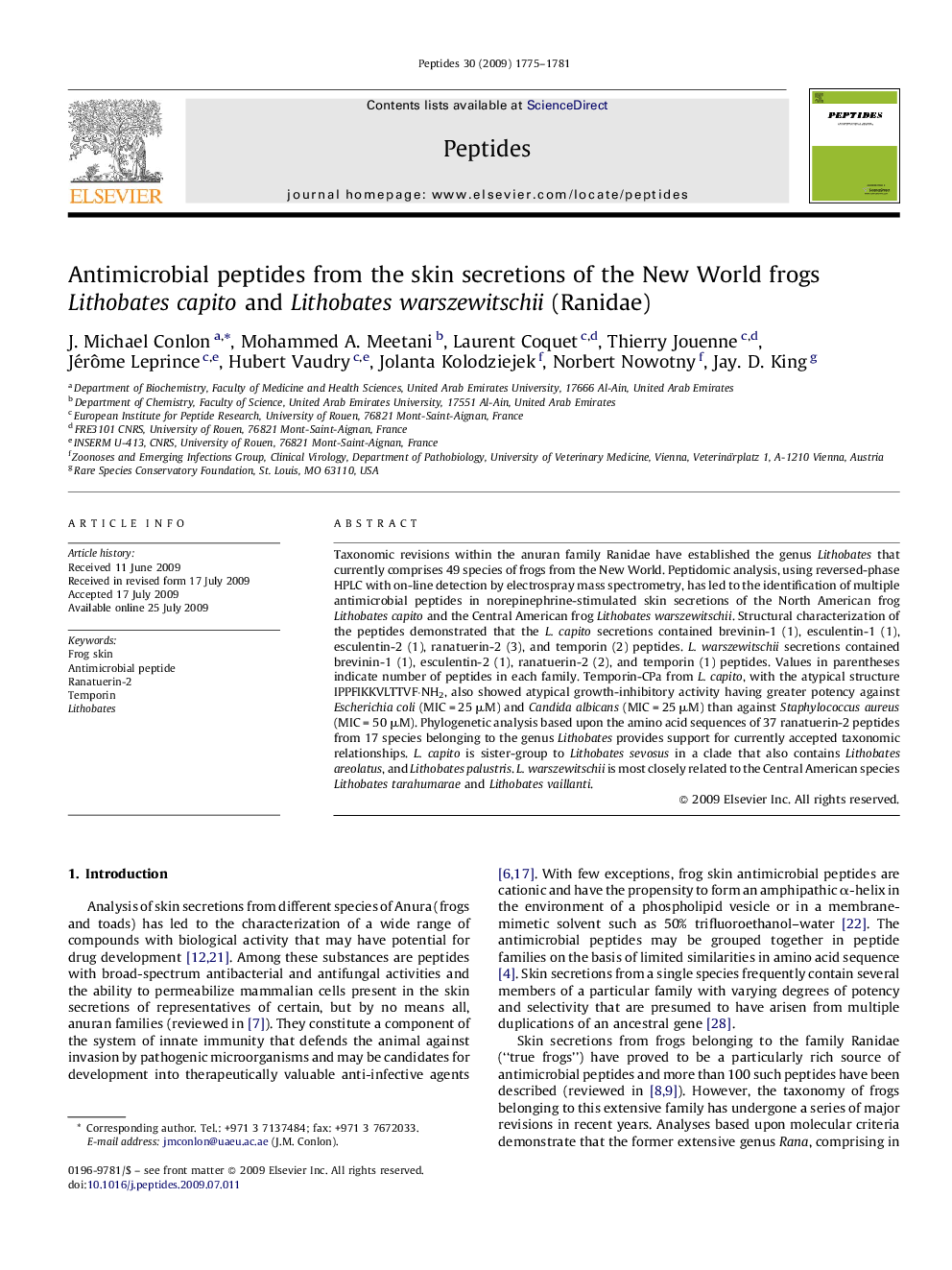| Article ID | Journal | Published Year | Pages | File Type |
|---|---|---|---|---|
| 2007772 | Peptides | 2009 | 7 Pages |
Taxonomic revisions within the anuran family Ranidae have established the genus Lithobates that currently comprises 49 species of frogs from the New World. Peptidomic analysis, using reversed-phase HPLC with on-line detection by electrospray mass spectrometry, has led to the identification of multiple antimicrobial peptides in norepinephrine-stimulated skin secretions of the North American frog Lithobates capito and the Central American frog Lithobates warszewitschii. Structural characterization of the peptides demonstrated that the L. capito secretions contained brevinin-1 (1), esculentin-1 (1), esculentin-2 (1), ranatuerin-2 (3), and temporin (2) peptides. L. warszewitschii secretions contained brevinin-1 (1), esculentin-2 (1), ranatuerin-2 (2), and temporin (1) peptides. Values in parentheses indicate number of peptides in each family. Temporin-CPa from L. capito, with the atypical structure IPPFIKKVLTTVF·NH2, also showed atypical growth-inhibitory activity having greater potency against Escherichia coli (MIC = 25 μM) and Candida albicans (MIC = 25 μM) than against Staphylococcus aureus (MIC = 50 μM). Phylogenetic analysis based upon the amino acid sequences of 37 ranatuerin-2 peptides from 17 species belonging to the genus Lithobates provides support for currently accepted taxonomic relationships. L. capito is sister-group to Lithobates sevosus in a clade that also contains Lithobates areolatus, and Lithobates palustris. L. warszewitschii is most closely related to the Central American species Lithobates tarahumarae and Lithobates vaillanti.
